Abstract
The Malaria Conference in Equatorial Africa, convened by the World Health Organization in 1950 in Kampala, Uganda, was a milestone in the history of modern malaria control activities on the continent of Africa. It presented and assessed the available international information on epidemiological aspects of this disease and attempted to coordinate the various methods of research and control of malaria. Its two main recommendations were that malaria should be controlled by all available methods, irrespective of the degree of endemicity of the disease, and that the benefits that malaria control might bring to the indigenous population should be evaluated.
The first period of field research and pilot control projects in Africa was between 1950 and 1964. A large number of studies in several African countries showed that the use of residual insecticides such as DDT and HCH might decrease, at times considerably, the amount of malaria transmission, but interruption of transmission could not be achieved, except in two relatively small projects in the forest areas of Cameroon and Liberia. During the second period, from 1965 to 1974, the difficulties of malaria eradication and control in Africa became more evident because of the development of resistance of Anopheles gambiae to DDT, HCH, and dieldrin; moreover administrative, logistic, and financial problems had emerged. It became clear that the prospects for malaria control (let alone those for eradication) were related to the availability of a network of basic health services. A number of “pre-eradication” programmes were set up in order to develop better methods of malaria control and to improve the rural health infrastructures. Much field research on the chemotherapy of malaria was carried out and the value of collective or selective administration of antimalarial drugs was fully recognized, although it became obvious that this could not play an important part in the decrease of transmission of malaria in Africa.
The role of research as one of the ways of solving the technical problems of malaria control in tropical Africa was stressed from the early days of the global malaria eradication programme; the past ten years have seen an immense expansion of this activity.
Full text
PDF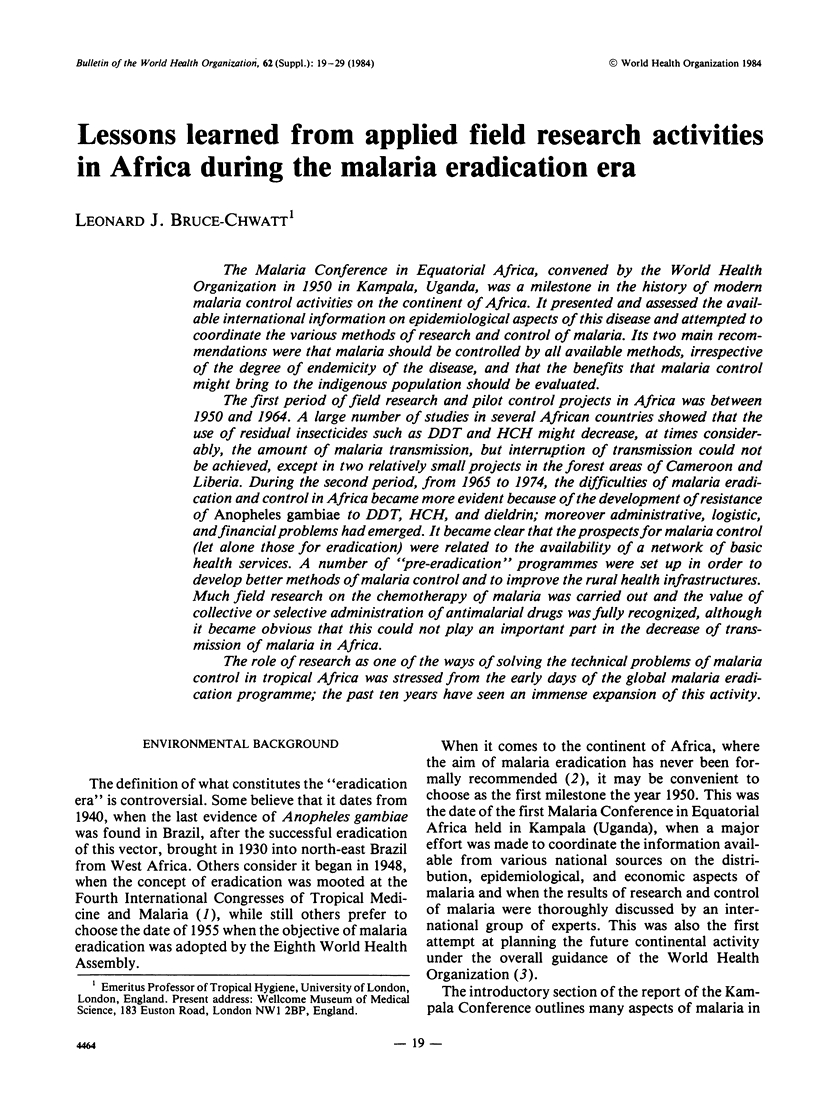
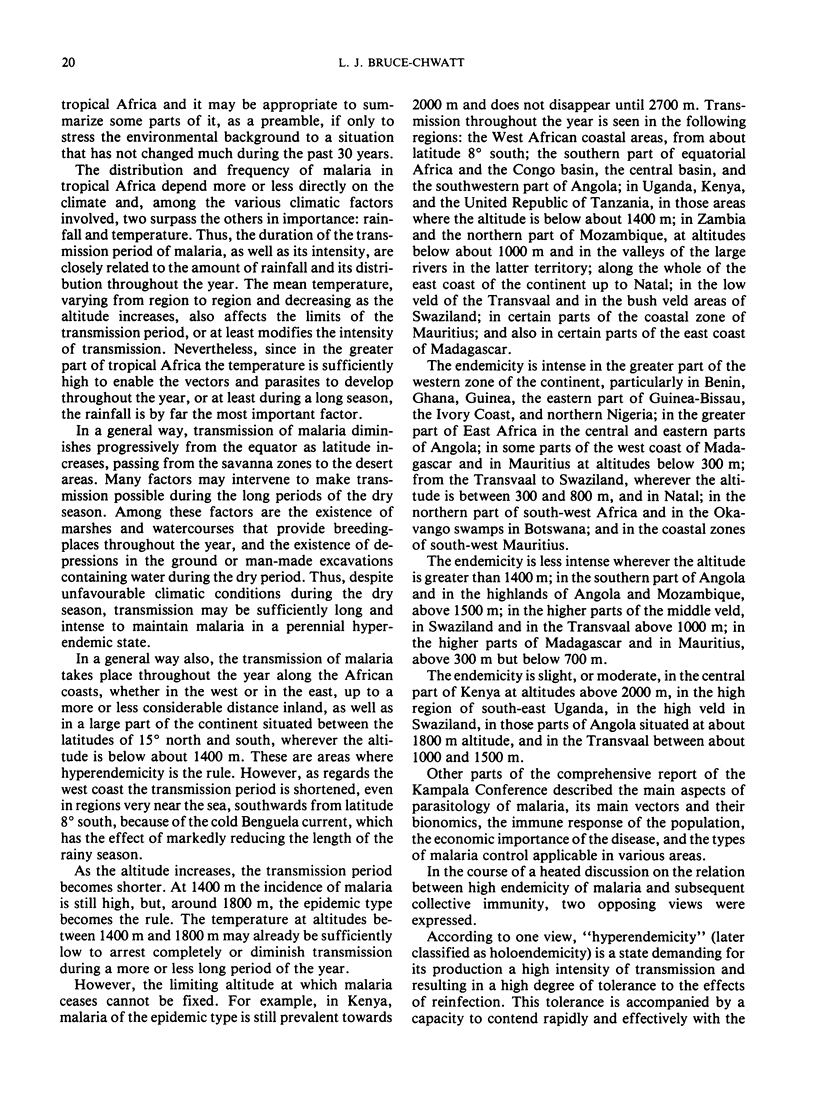
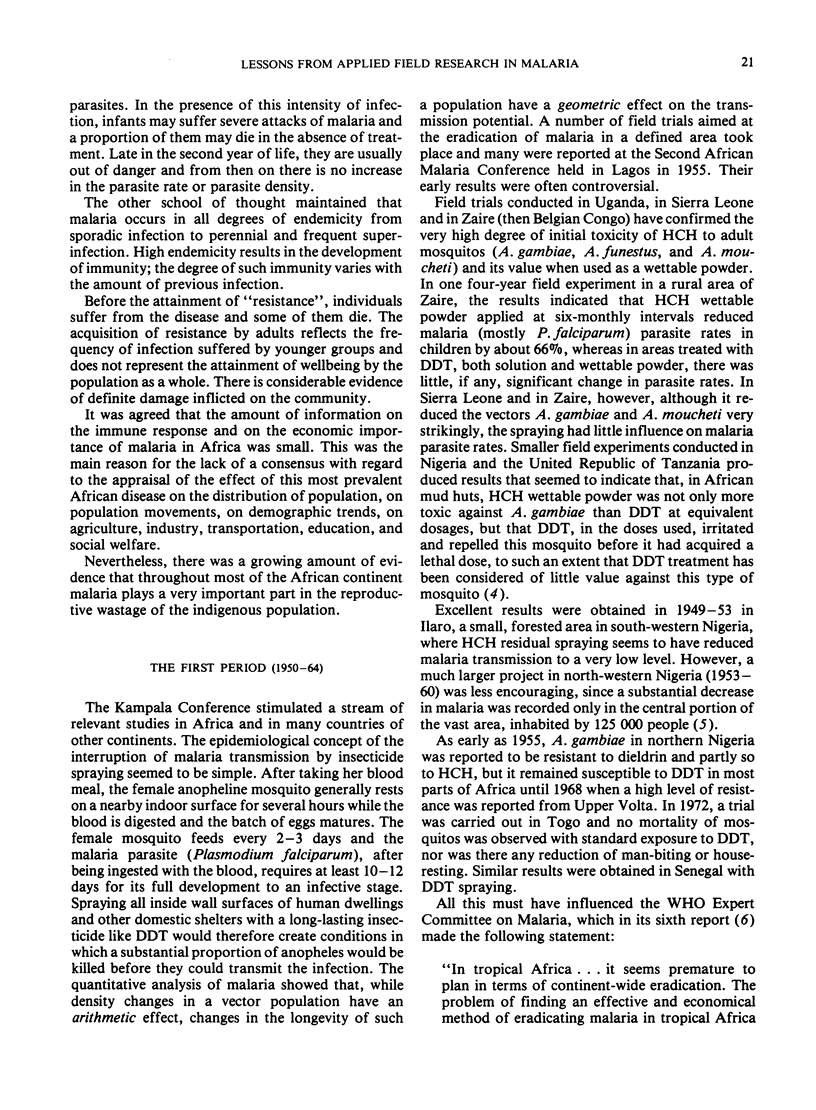
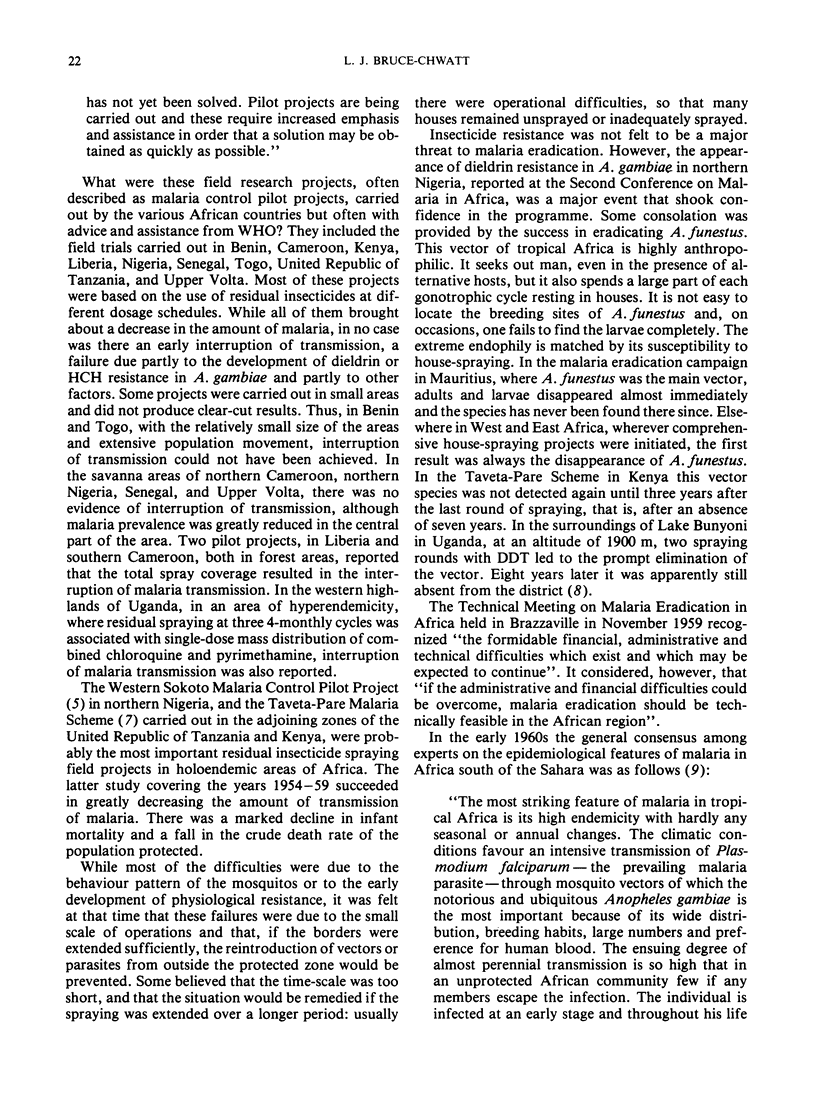
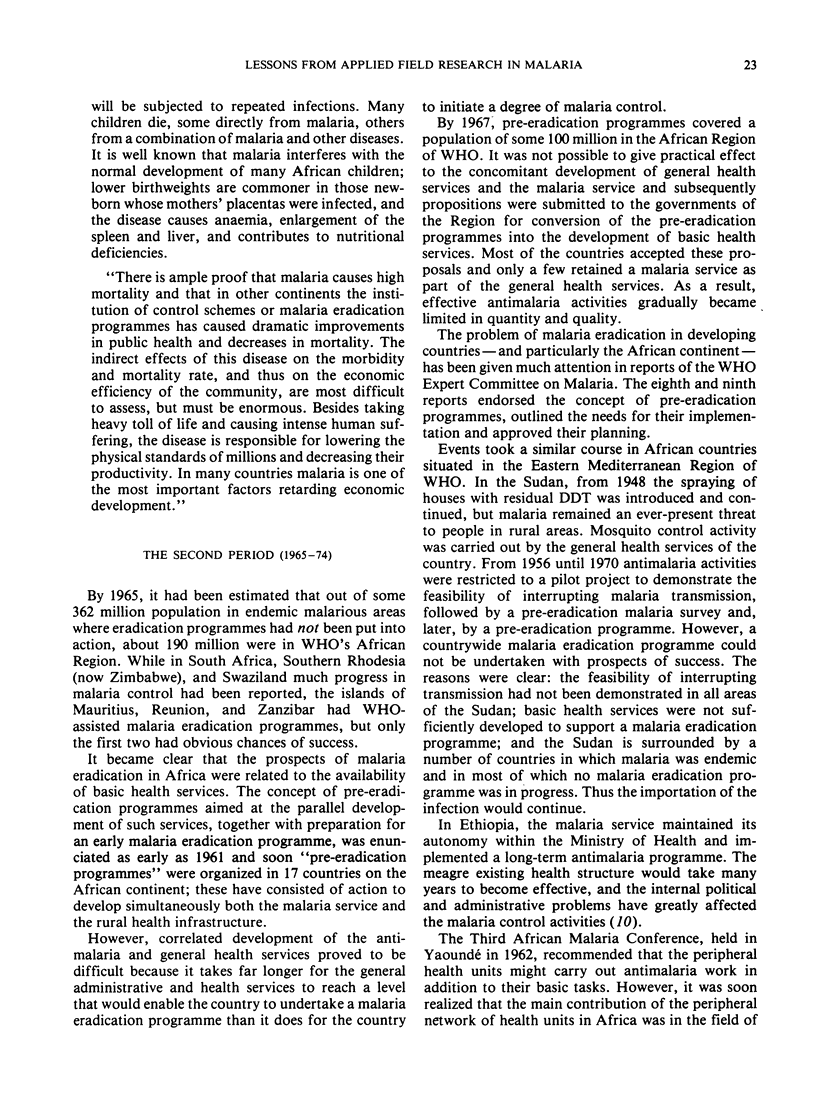
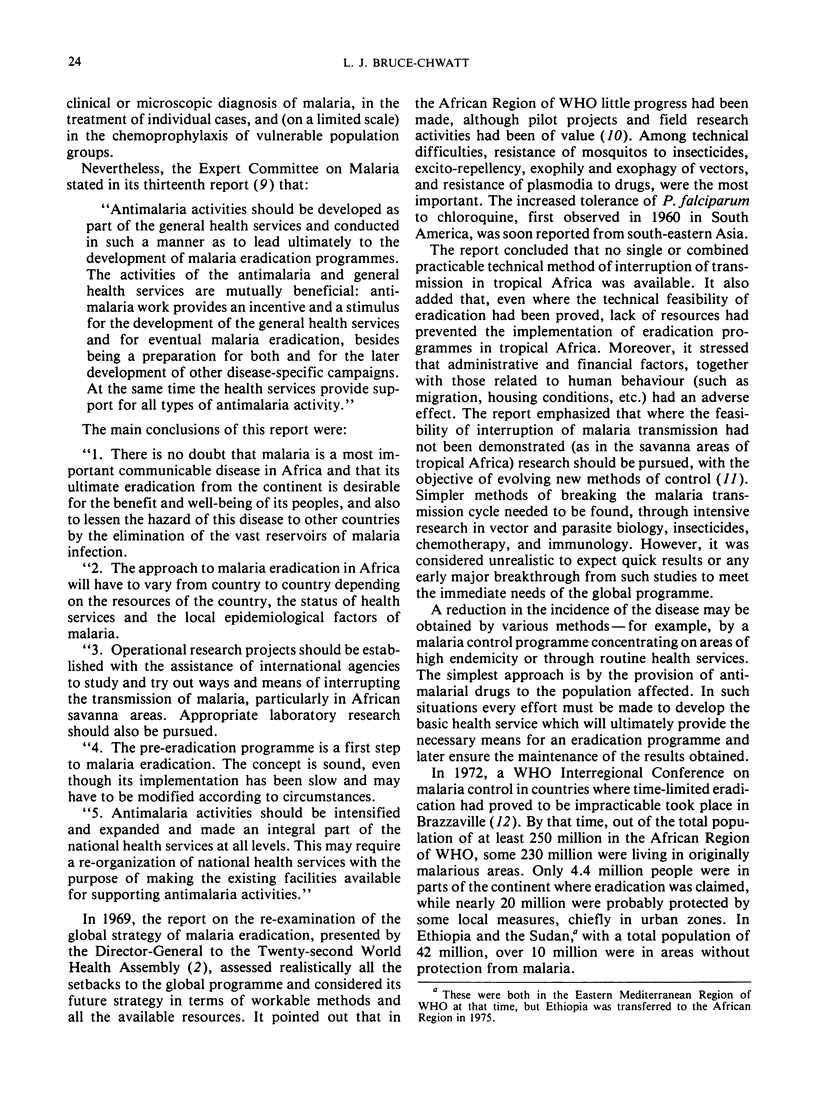
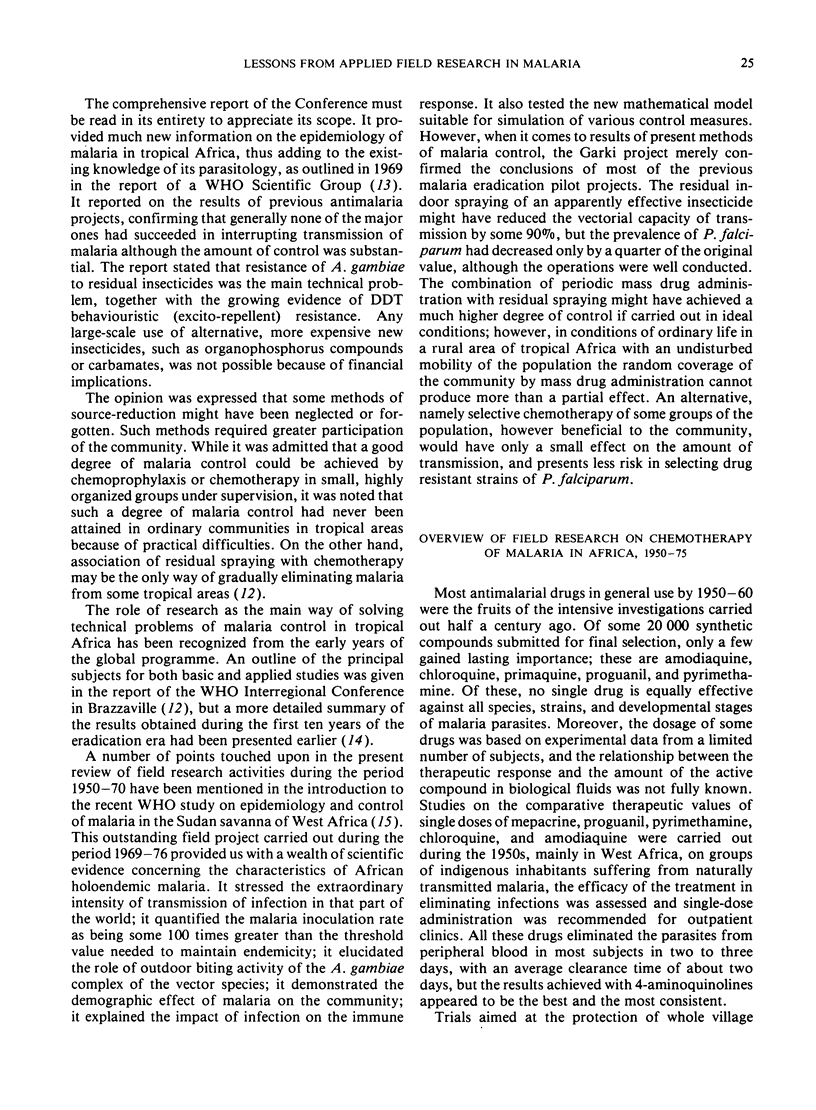
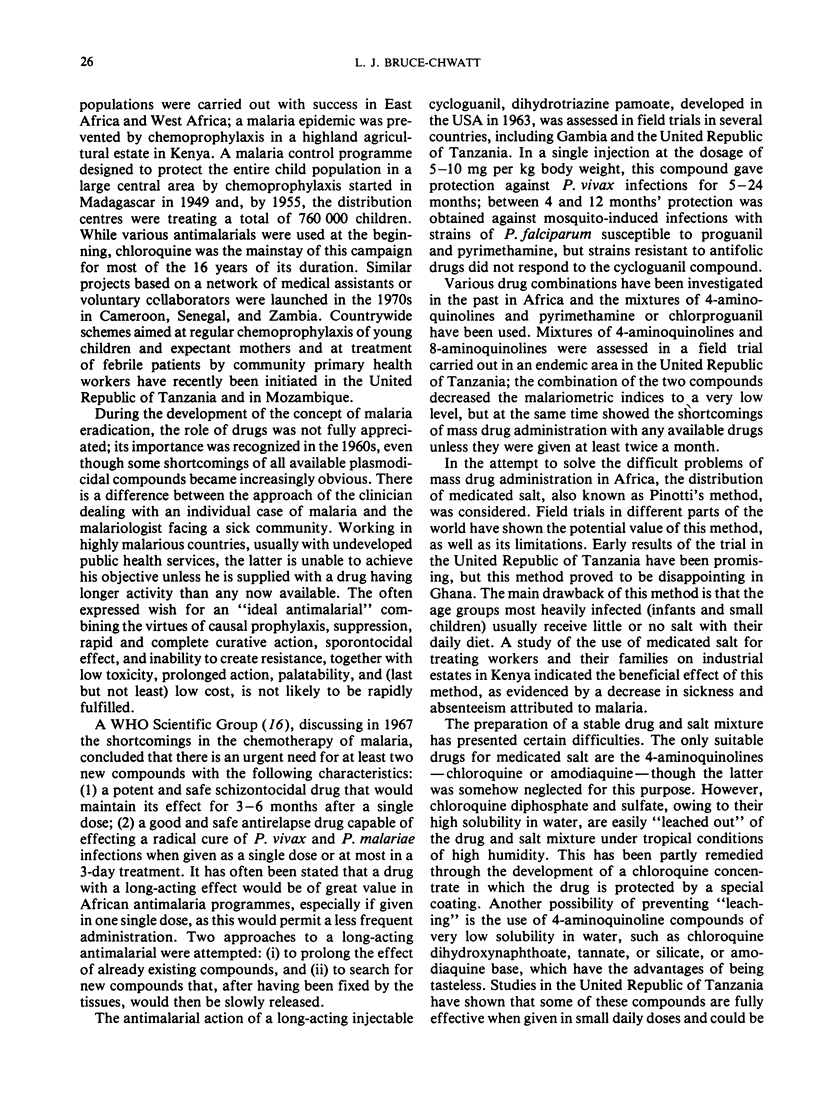
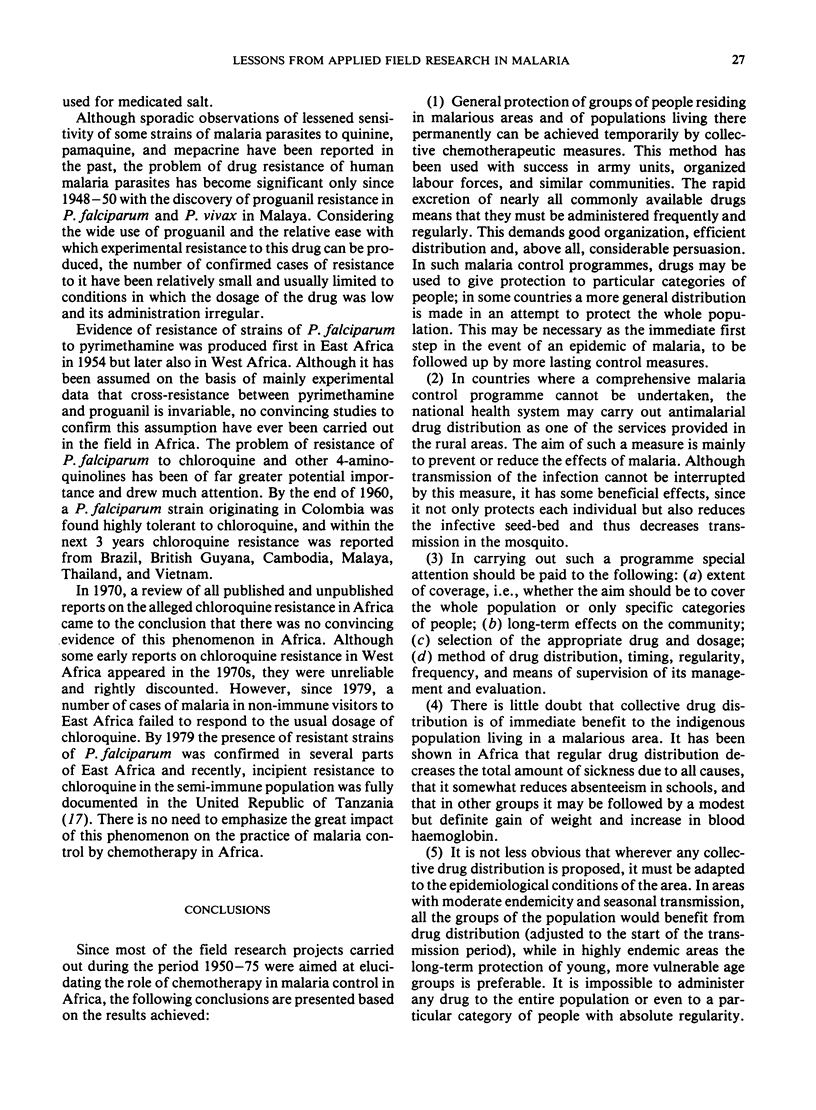
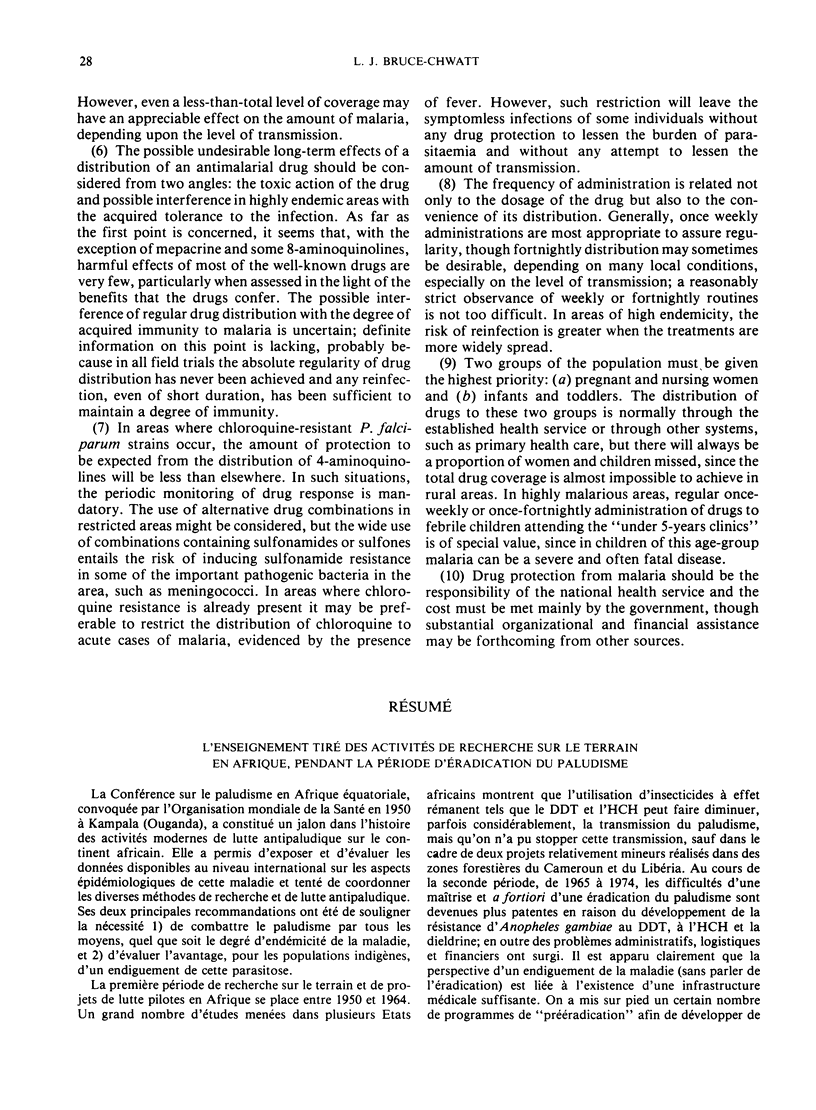
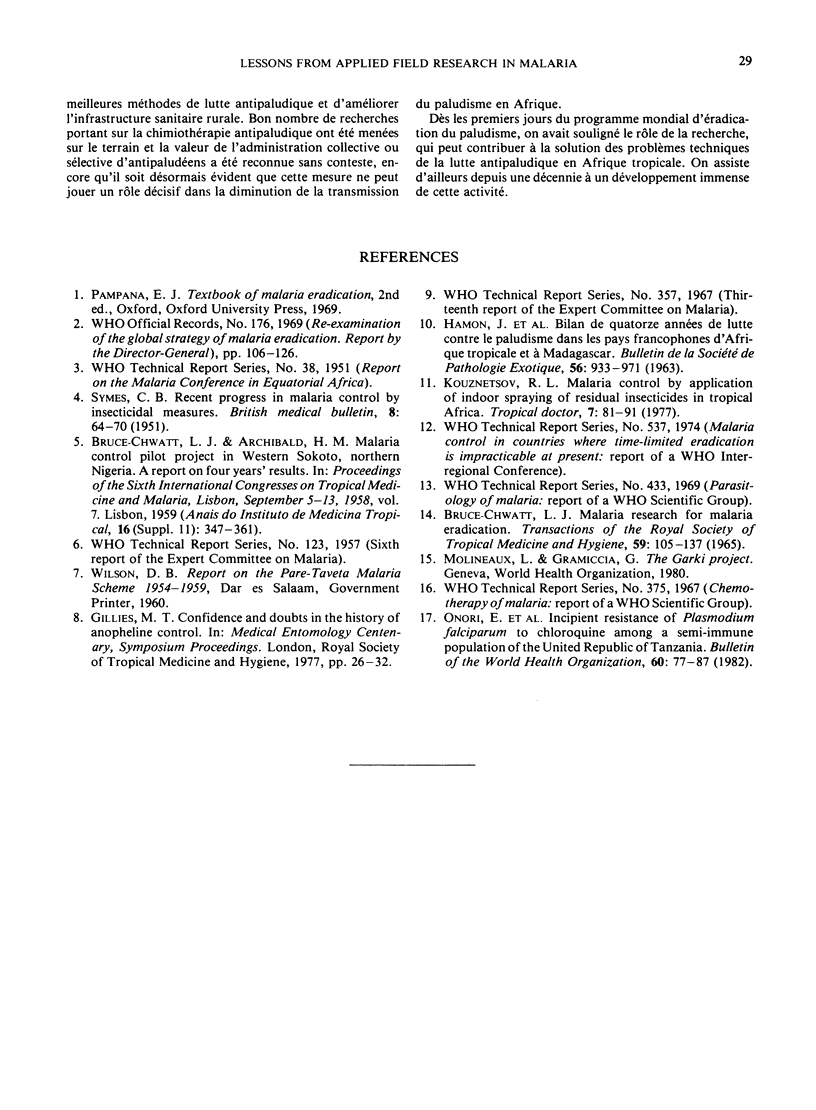
Selected References
These references are in PubMed. This may not be the complete list of references from this article.
- HAMON J., MOUCHET J., CHAUVET G., LUMARET R. BILAN DE QUATORZE ANN'EES DE LUTTE CONTRE LE PALUDISME DANS LES PAYS FRANCOPHONES D'AFRIQUE TROPICALE ET 'A MADAGASCAR. CONSID'ERATIONS SUR LA PERSISTANCE DE LA TRANSMISSION ET PERSPECTIVES D'AVENIR. Bull Soc Pathol Exot Filiales. 1963 Sep-Oct;56:933–971. [PubMed] [Google Scholar]
- Kouznetsov R. L. Malaria control by application of indoor spraying of residual insecticides in tropical Africa and its impact on community health. Trop Doct. 1977 Apr;7(2):81–91. doi: 10.1177/004947557700700216. [DOI] [PubMed] [Google Scholar]
- Onori E., Payne D., Grab D., Grab B., Horst H. I., Almeida Franco J., Joia H. Incipient resistance of Plasmodium falciparum to chloroquine among a semi-immune population of the United Republic of Tanzania. 1. Results of in vivo and in vitro studies and of an ophthalmological survey. Bull World Health Organ. 1982;60(1):77–87. [PMC free article] [PubMed] [Google Scholar]
- SYMES C. B. Recent progress in malaria control by insecticidal measures. Br Med Bull. 1951;8(1):64–70. doi: 10.1093/oxfordjournals.bmb.a074056. [DOI] [PubMed] [Google Scholar]


